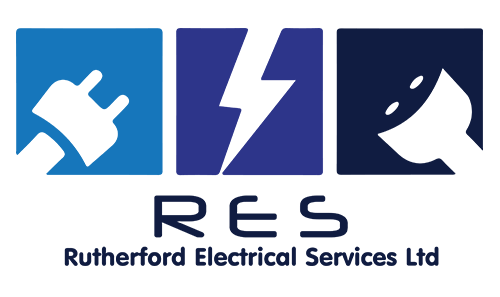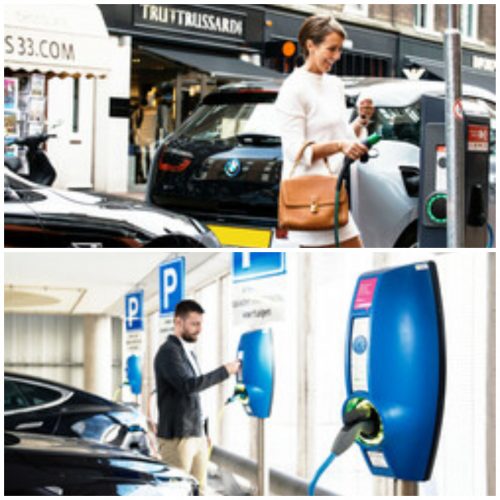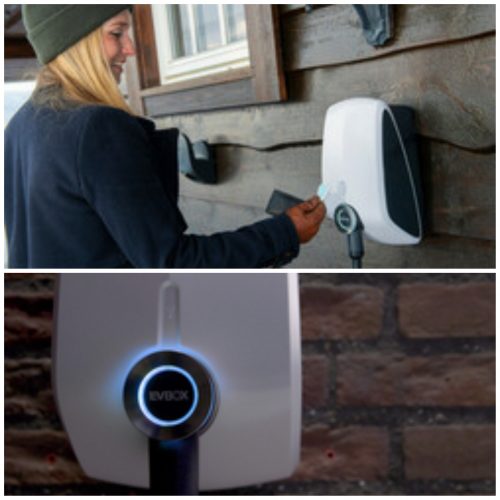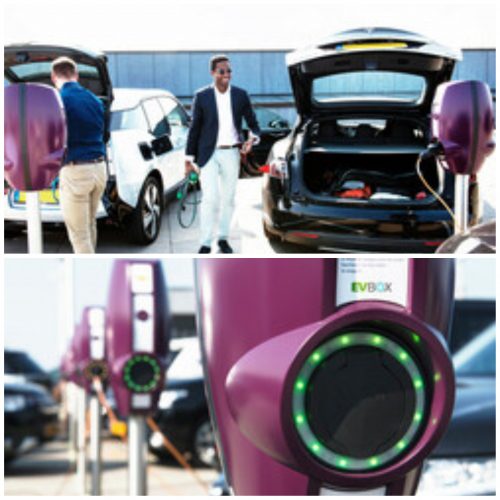WorkPlace Charging Scheme (WCS)
For employees, charging at work can be a convenient way to recharge an EV whilst parked during the day. From a business point of view, having a charge point at the workplace will become increasingly important as a facility for employees and visitors, while for businesses with an EV fleet it can be an essential operating factor.
Customer and visitor electric cars will have different charging connectivity needs, so it is important to install a charging point most likely to be compatible with the widest range of vehicles possible. The most common workplace installation is a wall-mounted Type 2 7kW charger, which is compatible with most of the best-selling electric vehicles and can charge a vehicle fully in around 3-7 hours, depending on model. Some businesses may wish to install a faster 22kW unit or even a rapid charger if cost and space allow.
Most workplace installations select wall-mounted units as they are typically cheaper to install. The alternative is a post, which are good options but usually have higher installation costs due to the need to get the electricity to the post under the ground.
The benefits:
- THE ENVIROMENT: Pro-actively encouraging the societal shift to e-mobility establishes businesses as green leaders and helps achieve sustainability goals.
- EMPLOYEE INCENTIVE: Create a great workplace where employees can charge their EVs. Workplaces offering EV charging are more likely to attract and retain top talent. It also encourages employees to buy electric cars privately.
- YOUR COMPANY: Reduce fuel and (electric) vehicle maintenance costs. Charge fees for charging station use. Tip: Reduce costs further with government grants.
Electric Vehicle HomeCharge Scheme
Given that private cars are usually parked overnight, most electric car owners rely on home charging to ensure that their EV is ready for use each morning. As well as being convenient, home-based overnight charging also has the advantage of being, in most cases, the cheapest time to recharge.
Typically the units are wall-mounted, and available either with a tethered Type 1 or Type 2 cable, which can be plugged straight into the car, or with a Type 2 socket for use with the vehicle’s charging cable.
Most suppliers provide two power rating options: 3 kW or 7 kW. Expect to pay more for the 7 kW option which reduces charge time significantly if the car has a fast on-board charger. For example, a Nissan Leaf on a 3 kW home charge unit will provide a full charge in around 12-13 hours, whereas a 7 kW unit will give a full charge in around six hours.
EV Connector Types
There are three main types of EV charging – rapid, fast, and slow. These represent the power outputs, and therefore charging speeds, available to charge an EV. Note that power is measured in kilowatts (kW).
Each charger type has an associated set of connectors which are designed for low- or high-power use, and for either AC or DC charging. The following sections offer a detailed description of the three main charge point types and the different connectors available.
Rapid chargers

- 50 kW DC charging on one of two connector types
- 43 kW AC charging on one connector type
- 100+ kW DC ultra-rapid charging on one of two connector types
- All rapid units have tethered cables

Rapid chargers are the fastest way to charge an EV, often found at motorway services or locations close to main routes. Rapid devices supply high power direct or alternating current – DC or AC – to recharge a car as fast as possible.
Depending on model, EVs can be recharged to 80% in as little as 20 minutes, though an average new EV would take around an hour on a standard 50 kW rapid charge point. Power from a unit represents the maximum charging speed available, though the car will reduce charging speed as the battery gets closer to full charge. As such, times are quoted for a charge to 80%, after which the charging speed tails off significantly. This maximises charging efficiency and helps protect the battery.
All rapid devices have charging cables tethered to the unit, and rapid charging can only be used on vehicles with rapid-charging capability. Given the easily recognisable connector profiles – see images below – the specification for your model is easy to check from the vehicle manual or inspecting the on-board inlet.
Rapid DC chargers provide power at 50 kW (125A), use either the CHAdeMO or CCS charging standards, and are indicated by purple icons on Zap-Map. These are the most common type of rapid EV charge points currently, having been the standard for the best part of a decade. Both connectors typically charge an EV to 80% in 20 minutes to an hour depending on battery capacity and starting state of charge.
Ultra-Rapid DC chargers provide power at 100 kW or more. These are typically either 100 kW, 150 kW, or 350 kW – though other maximum speeds between these figures are possible. These are the next-generation of rapid charge point, able to keep recharging times down despite battery capacities increasing in newer EVs.
For those EVs capable of accepting 100 kW or more, charging times are kept down to 20-40 minutes for a typical charge, even for models with a large battery capacity. Even if an EV is only able to accept a maximum of 50 kW DC, they can still use ultra-rapid charge points, as the power will be restricted to whatever the vehicle can deal with. As with 50 kW rapid devices, cables are tethered to the unit, and provide charging via either CCS or CHAdeMO connectors.
Tesla’s Supercharger network also provides rapid DC charging to drivers of its cars, but use either a Tesla Type 2 connector or a Tesla CCS connector – depending on model. These can charge at up to 150 kW. While all Tesla models are designed for use with Supercharger units, many Tesla owners use adaptors which enable them to use general public rapid points, with CCS and CHAdeMO adaptors available. The roll-out of CCS charging on the Model 3 and subsequent upgrading of older models allows drivers to access a greater proportion of the UK’s rapid charging infrastructure.
Model S and Model X drivers are able to use the Tesla Type 2 connector fitted to all Supercharger units. Tesla Model 3 drivers must use the Tesla CCS connector, which is being phased in across all Supercharger units.
Rapid AC chargers provide power at 43 kW (three-phase, 63A) and use the Type 2 charging standard. Rapid AC units are typically able to charge an EV to 80% in 20-40 minutes depending the model’s battery capacity and starting state of charge.CHAdeMO
50 kW DC

CCS
50-350 kW DC

Type 2
43 kW AC

Tesla Type 2
150 kW DC

EV models that use CHAdeMO rapid charging include the Nissan Leaf and Mitsubishi Outlander PHEV. CCS compatible models include the BMW i3, Kia e-Niro, and Jaguar I-Pace. Tesla’s Model 3, Model S, and Model X are exclusively able to use the Supercharger network, while the only model able to make maximum use of Rapid AC charging is the Renault Zoe.PUBLIC NETWORKS
Fast Chargers

- 7kW fast charging on one of three connector types
- 22kW fast charging on one of three connector types
- 11kW fast charging on Tesla Destination network
- Units are either untethered or have tethered cables

Fast chargers are typically rated at either 7 kW or 22 kW (single- or three-phase 32A). The vast majority of fast chargers provide AC charging, though some networks are installing 25 kW DC chargers with CCS or CHAdeMO connectors.
Charging times vary on unit speed and the vehicle, but a 7 kW charger will recharge a compatible EV with a 40 kWh battery in 4-6 hours, and a 22 kW charger in 1-2 hours. Fast chargers tend to be found at destinations such as car parks, supermarkets, or leisure centres, where you are likely be parked at for an hour or more.
The majority of fast chargers are 7 kW and untethered, though some home and workplace based units have cables attached.
Should a cable be tethered to the device, only models compatible with that connector type will be able to use it; e.g. a Type 1 tethered cable could be used by a first-generation Nissan Leaf, but not a second-generation Leaf, which has a Type 2 inlet. Untethered units are therefore more flexible and can be used by any EV with the correct cable.
Charging rates when using a fast charger will depend on the car’s on-board charger, with not all models able to accept 7 kW or more.
These models can still be plugged in to the charge point, but will only draw the maximum power accepted by the on-board charger. For example, a Nissan Leaf with a 3.3 kW on-board charger will only draw a maximum of 3.3 kW, even if the fast charge point is 7 kW or 22 kW.
Tesla’s ‘destination’ chargers provide 11 kW or 22 kW of power but, like the Supercharger network, are intended only or use by Tesla models. Tesla does provide some standard Type 2 chargers at many of its destination locations, and these are compatible with any plug-in model using the compatible connector.Type 2 –
7-22 kW AC

Type 1 –
7 kW AC

Commando –
7-22 kW AC

Almost all EVs and PHEVs are able to charge on a Type 2 units, with the correct cable at least. It is by far the most common public charge point standard around, and most plug-in car owners will have a cable with a Type 2 connector charger-side.CHARGING AT WORK
Slow chargers

- 3 kW – 6 kW slow charging on one of four connector types
- Charging units are either untethered or have tethered cables
- Includes mains charging and from specialist chargers
- Often covers home charging

Most slow charging units are rated at up to 3 kW, a rounded figure that captures most slow-charging devices. In reality, slow charging is carried out between 2.3 kW and 6 kW, though the most common slow chargers are rated at 3.6 kW (16A). Charging on a three-pin plug will typically see the car draw 2.3 kW (10A), while the majority of lamp-post chargers are rated at 5.5 kW because of existing infrastructure – some are 3 kW however.
Charging times vary depending on the charging unit and EV being charged, but a full charge on a 3 kW unit will typically take 6-12 hours. Most slow charging units are untethered, meaning that a cable is required to connect the EV with the charge point.
Slow charging is a very common method of charging electric vehicles, used by many owners to charge at home overnight. However, slow units aren’t necessarily restricted to home use, with workplace and public points also able to be found. Because of the longer charging times over fast units, slow public charge points are less common and tend to be older devices.
While slow charging can be carried out via a three-pin socket using a standard 3-pin socket, because of the higher current demands of EVs and the longer amount of time spent charging, it is strongly recommended that those who need to charge regularly at home or the workplace get a dedicated EV charging unit installed by an accredited installer.3-Pin –
3 kW AC

Type 1 –
3 – 6 kW AC

Type 2 –
3 – 6 kW AC

Commando –
3 – 6 kW AC

All plug-in EVs can charge using at least one of the above slow connectors using the appropriate cable. Most home units have the same Type 2 inlet as found on public chargers, or tethered with a Type 1 connector where this is suitable for a particular EV.CHARGING AT HOME
Connectors and cables

The choice of connectors depends on the charger type (socket) and the vehicle’s inlet port. On the charger-side, rapid chargers use CHAdeMO, CCS (Combined Charging Standard) or Type 2 connectors. Fast and slow units usually use Type 2, Type 1, Commando, or 3-pin plug outlets.
On the vehicle-side, European EV models (Audi, BMW, Renault, Mercedes, VW and Volvo) tend to have Type 2 inlets and the corresponding CCS rapid standard, while Asian manufacturers (Nissan and Mitsubishi) prefer a Type 1 and CHAdeMO inlet combination.
This doesn’t always apply however, with increasing numbers of Asian manufacturers switching to European standards for cars sold in the region. For example, Hyundai and Kia plug-in models all feature Type 2 inlets, and the pure-electric models use Type 2 CCS. The Nissan Leaf has switched to Type 2 AC charging for its second-generation model, but unusually has retained CHAdeMO for DC charging.
Most EVs are supplied with two cables for slow and fast AC charging; one with a three-pin plug and the other with a Type 2 connector charger-side, and both fitted with a compatible connector for the car’s inlet port. These cables enable an EV to connect to most untethered charge points, while use of tethered units require using the cable with the correct connector type for the vehicle.



